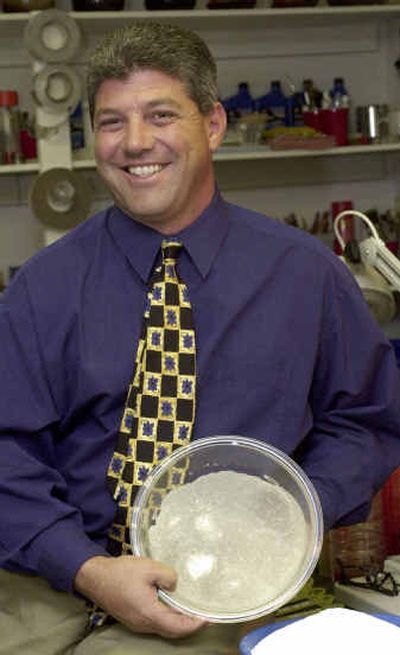Amateur storm busters offer crackpot proposals

JACKSONVILLE, Fla. — Amateur hurricane-busters have come up with any number of crackpot ideas to spare Florida from ferocious storms. Among them: blowing hurricanes away with giant fans or blowing them up with nuclear warheads.
Even the federal government got into the act, with three decades of ill-fated research called “Project Stormfury” before shelving the idea of weather modification in the 1980s.
But dozens of ideas — part hope, part fantasy — continue to crop up among weather wonks, Internet bloggers and others who think they have come up with a way to spare coastal residents the misery of hurricanes.
Suggestions have included coating the surface of the water with olive oil; towing an iceberg down to Florida to cool down the water temperature; or building large fans on the coast to blow away approaching storms.
“And then there was a guy who called and said he could pray them away,” said Hugh Willoughby, a research professor with the International Hurricane Center at Florida International University.
By far the most outlandish proposal, and one of the most recurrent, was the idea to use a nuclear warhead to blow a hurricane out of the water.
“Hurricanes are bad enough without being radioactive,” Willoughby said. “Put that genie back in the bottle. Nuclear weapons are more dangerous than hurricanes.”
Willoughby, who reviewed some of the proposed inventions when he was director of the National Oceanic and Atmospheric Administration’s hurricane research division, said many of the ideas are quickly debunked for lacking a basic understanding of meteorology.
One government plan was to spread a substance on the water, but the wind and waves made it impossible to keep a slick, he said.
“All of these underestimate the scale of a storm,” Willoughby said.
Still, one South Florida businessman thinks he has a winning idea — flying a Boeing 747 into the monster storm, where it would hit it with tons of super absorbent powder, literally sucking it dry and breaking it apart.
Only a test will determine if it is a flight of fantasy, and there are no plans to try the process on the approaching Hurricane Ivan.
But businessman Peter Cordani, chief operating officer of Dyn-O-Mat, a company that sells environmental absorbent products, thinks he can knock down a storm by one or two categories.
He claims to have caused a thunderstorm to disappear in a test off Palm Beach, and he’s assembled a team including two former astronauts to work on the plan.
“We have a lot of confidence in it,” said Scott Mac Leod, one of the astronauts who tested the lunar module.
Others aren’t so sure.
The government’s Atlantic Oceanographic and Meteorological Laboratory describes the proposal as a long-shot: Any effect of the absorbent powder would be small, and require thousands of tons of goop, flown into the storm in hundreds of sorties every half hour or so.
Willoughby said the project would be “hugely expensive for not much benefit.”
“It would really take all of the military heavy-lift aircraft that the United States has to carry the material, and there would be a major air traffic control problem around the eye,” he told the AP last year.
The government suggests that amateur hurricane busters focus their energy on more realistic goals — enforcing building codes, educating the public about preparedness and helping poorer nations prepare for the storms.